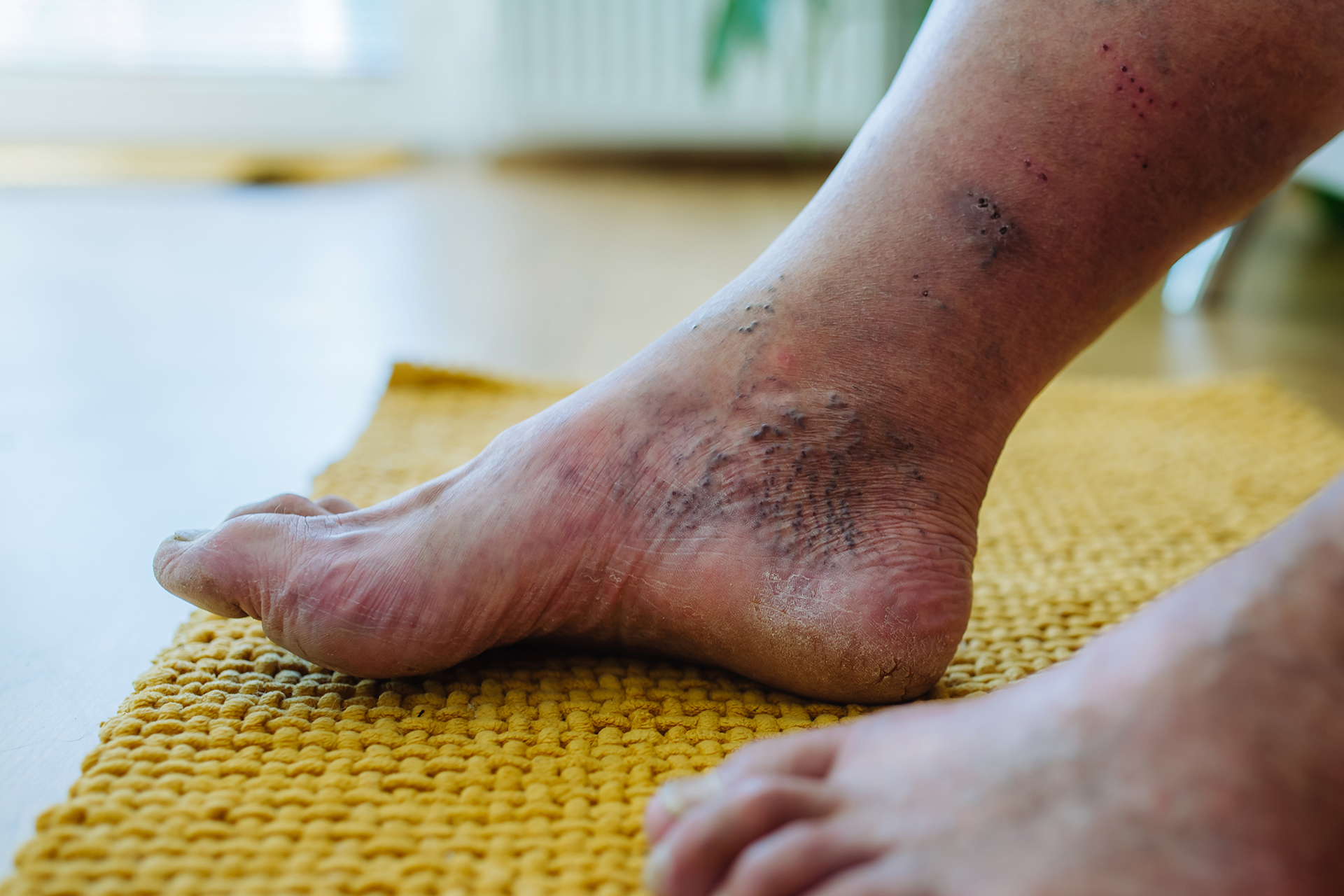Understanding the Impact of Diabetic Foot Ulcers
Comprehensive Diabetic Foot Ulcer Management begins with recognizing just how serious this complication can become. Diabetic foot ulcers are open sores or wounds that typically occur on the bottom of the foot. They form due to a combination of factors such as nerve damage, poor blood flow, and prolonged pressure. These ulcers are not minor concerns—they can lead to severe infections, hospitalizations, and even amputations if neglected. Beyond the physical challenges, they bring significant emotional stress to patients and families, affecting confidence, mobility, and independence. They also pose a substantial financial burden on healthcare systems worldwide. Understanding their impact emphasizes the importance of proactive care and early intervention as a cornerstone of effective management.
Risk Factors That Increase Ulcer Development
Certain risk factors make people more susceptible to developing diabetic foot ulcers. Poorly controlled blood sugar damages small nerves and blood vessels, reducing the body’s ability to heal wounds efficiently. Peripheral arterial disease further restricts circulation, depriving the foot of oxygen and nutrients necessary for repair. Neuropathy, or nerve damage, limits sensation, causing patients to overlook injuries or blisters that could quickly worsen. Lifestyle choices such as smoking and being overweight exacerbate these risks by impeding circulation and increasing pressure on the feet. Improper footwear, particularly tight shoes or those without adequate support, can cause friction and sores that easily become infected. People who have had a previous foot ulcer or amputation face an even greater likelihood of recurrence. Recognizing these risk factors is the first step toward preventing complications.
Early Warning Signs to Watch For
Detecting early warning signs plays a central role in Comprehensive Diabetic Foot Ulcer Management. Persistent redness, swelling, or warmth in one area of the foot may suggest inflammation or the onset of infection. Patients should pay attention to subtle changes in skin texture, such as dryness, cracking, or thinning. Alterations in skin color, including paleness, bruising, or dark spots, could indicate underlying circulation problems. Pain, numbness, or tingling sensations should not be ignored, as these are often linked to neuropathy. An open sore, blister, or wound that does not heal within two weeks requires immediate medical attention. More alarming symptoms include a foul odor or discharge, both of which signal advancing infection. By watching for these signs, patients can prevent minor issues from escalating into life-threatening complications.
Diagnostic Approaches for Accurate Assessment
Proper diagnosis ensures patients receive the right treatment for their condition. Physical foot examinations performed by healthcare providers remain the first line of assessment, allowing clinicians to detect wounds, infections, and structural abnormalities. Imaging techniques, such as X-rays, are useful for identifying bone infections, while MRI scans can reveal deeper tissue involvement. Blood tests provide additional insights by detecting systemic infections or assessing blood sugar levels. Vascular assessments, including Doppler ultrasound or ankle-brachial index measurements, determine the quality of blood flow to the lower extremities. Together, these tools create a complete picture of a patient’s foot health. Accurate assessment is crucial for tailoring treatment plans that address not only the ulcer itself but also underlying health issues. Without proper diagnosis, even the most advanced therapies may fail to deliver results.
Effective Wound Care Strategies
One of the most important pillars of Comprehensive Diabetic Foot Ulcer Management is proper wound care. This begins with thorough cleaning of the ulcer to remove debris and reduce bacterial load. Dressing changes are necessary to protect the wound and maintain a moist environment that supports healing. Advanced products such as hydrocolloid dressings, foam dressings, and alginates can be used depending on the wound’s characteristics. In some cases, negative pressure wound therapy is recommended to remove fluids and promote tissue growth. Antibiotic ointments or systemic antibiotics may be prescribed to combat infection when necessary. The use of sterile technique during dressing changes is vital, as even minor contamination can worsen the wound. Consistent wound care not only accelerates healing but also reduces the risk of severe complications.
The Role of Offloading in Healing
Pressure relief, also known as offloading, is another essential component of treatment. Since diabetic foot ulcers often occur on weight-bearing areas, continuous pressure delays recovery. Total contact casting is considered the gold standard, as it evenly distributes weight and reduces pressure directly on the ulcer. Removable devices, such as specialized boots or orthotic shoes, offer an alternative but require strong patient compliance. Custom insoles can help redistribute weight and reduce hotspots that lead to ulceration. The challenge lies in ensuring patients consistently use these devices, as removing them prematurely increases risk. Education plays an important role here, helping patients understand why strict adherence is crucial. Offloading not only supports healing but also prevents recurrence once the ulcer has closed.
Advanced Treatment Modalities
When traditional wound care and offloading are not enough, advanced treatments come into play. Hyperbaric oxygen therapy exposes patients to 100% oxygen at high pressure, enhancing oxygen delivery to tissues and accelerating healing. Bioengineered skin substitutes and growth factors stimulate tissue regeneration, offering additional options for stubborn ulcers. Stem cell therapy, though still being studied, shows promise in repairing damaged tissue and improving long-term outcomes. Surgical interventions, including debridement or bypass procedures, may be required to remove dead tissue or restore blood flow. Each of these treatments should be considered based on the severity of the ulcer and patient-specific health factors. Access to advanced modalities often requires specialized wound care centers, emphasizing the need for referral networks. These therapies provide hope for patients whose ulcers resist conventional methods.
Importance of Blood Sugar Control in Healing Outcomes
Blood sugar management directly influences wound healing success. Elevated glucose levels impair the immune system, reduce circulation, and slow tissue repair. Stable blood sugar is critical for creating an internal environment where wounds can close effectively. Patients are encouraged to follow balanced diets rich in whole grains, lean proteins, and vegetables while avoiding excessive processed sugars. Regular exercise improves circulation and enhances insulin sensitivity, supporting better glucose control. Medications, whether oral agents or insulin, should be taken as prescribed under the guidance of an endocrinologist. Continuous monitoring, including the use of glucose meters or continuous glucose monitoring systems, helps patients track progress and avoid dangerous spikes. Without consistent blood sugar management, even the best wound care techniques may fall short.
Long-Term Preventive Measures for Diabetic Foot Health
Preventive care is central to long-term success in Comprehensive Diabetic Foot Ulcer Management. Patients should inspect their feet daily, using mirrors if necessary to check hard-to-see areas. Good hygiene, including washing with mild soap and moisturizing, prevents dry, cracked skin that can become an entry point for infection. Footwear should always be well-fitting and supportive, with protective socks that minimize friction. Routine visits to podiatrists ensure professional oversight, allowing early detection of potential problems. Lifestyle changes such as quitting smoking, losing weight, and staying active further reduce risks. Education empowers patients to take ownership of their health, making prevention a daily habit rather than an afterthought. With proper care, many diabetic foot ulcers can be avoided altogether.
Multidisciplinary Approach to Care
Effective management rarely rests on a single healthcare provider. Instead, a multidisciplinary team approach brings together podiatrists, endocrinologists, vascular surgeons, wound care specialists, and nurses. Each professional contributes unique expertise, ensuring comprehensive treatment that addresses both the ulcer and the underlying causes. Patient education remains at the center of this approach, as understanding fosters adherence to care plans. Family members also play a role, offering support and encouragement for lifestyle changes and treatment compliance. Collaboration improves healing outcomes and reduces the likelihood of recurrence. Healthcare systems that prioritize multidisciplinary care show better long-term success in reducing amputations and improving quality of life. By integrating expertise across specialties, patients receive care that is both holistic and effective.
Frequently Asked Questions (FAQ)
1. What is the most effective way to treat a diabetic foot ulcer?
The most effective treatment involves a combination of wound care, offloading, infection control, and blood sugar management tailored to each patient.
2. How long does it usually take for a diabetic foot ulcer to heal?
Healing can take several weeks to months, depending on ulcer severity, overall health, and adherence to treatment.
3. Can diabetic foot ulcers be completely prevented?
While not every ulcer can be prevented, daily self-care, proper footwear, and blood sugar control significantly lower the risk.
4. When should I see a doctor if I notice a sore on my foot?
Seek medical attention immediately if a sore does not improve within a few days, worsens, or shows signs of infection.
5. Are there natural remedies that help in diabetic foot ulcer healing?
Some natural approaches may support healing, but they should never replace medical care. Always consult a healthcare provider before trying alternative remedies.
6. What happens if a diabetic foot ulcer is left untreated?
Untreated ulcers can progress to severe infections, gangrene, and even amputations, making early care essential.






